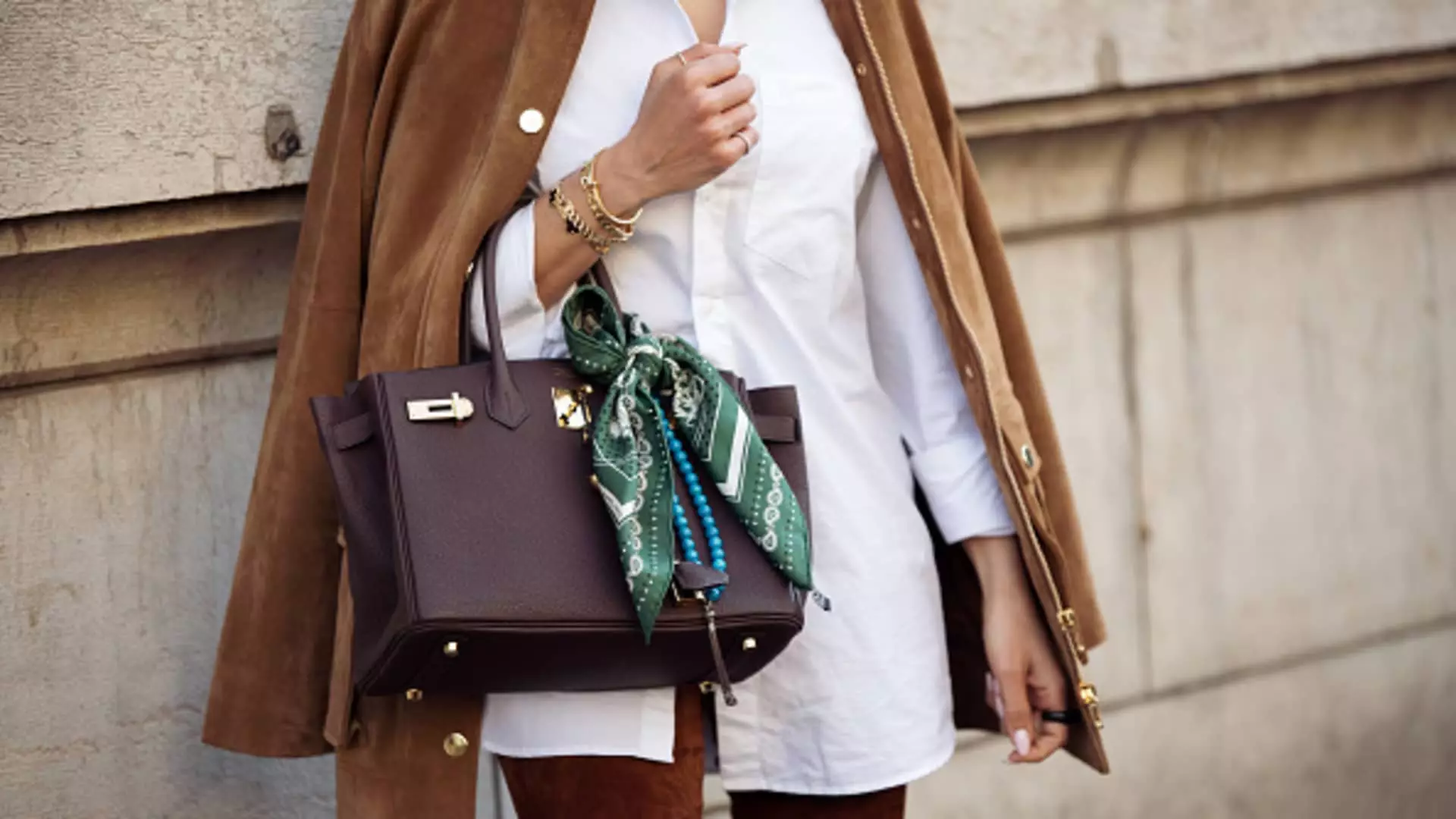Hermès, the prestigious French luxury brand known for its iconic handbags and scarves, will soon elevate its U.S. prices—a decision fueled by the recent tariff climate spearheaded by the Trump administration. The move is far more than just a pragmatic response to rising costs; it’s a calculated step that embodies both economic strategy and an implicit critique of the current trade policies. As complex geopolitical factors intertwine with retail considerations, Hermès underscores why luxury shouldn’t rely solely on market fluctuations.
The Price Increase: A Unique Strategy
Hermès’ strategy to increase prices uniquely targets only the American market, insulating their international operations from the repercussions of U.S. tariffs. Eric du Halgouët, the company’s finance chief, has articulated this remarkable strategy by saying the hikes aim to “fully offset” the impact of a 10% tariff specific to the U.S. market. By framing the price increase as a necessary measure to counteract tariffs, the brand cleverly positions itself as reactive rather than proactive in the face of political intrusion. This move raises important questions about the resilience of luxury brands in an economic landscape increasingly riddled with uncertainties.
For many, the decision may appear to be simply about offsetting cost increases. Yet, this adjustment subtly challenges the paradigm of how tariffs affect consumer behavior and market dynamics in luxury spending. The expectation is that high-income clientele, accustomed to paying premium prices, may absorb these increases without a second thought. If successful, Hermès could set a precedent for other luxury goods to similarly rise in price without significant fallout.
Consumer Reactions: A Luxury Dilemma
In a world where consumer sentiment is often temperamental, how will Hermès customers react to this news? Brand loyalty in the luxury sector is a double-edged sword. While dedicated fans of Hermès may begrudgingly accept increased prices for products they covet, there’s an underlying tension simmering among middle-class consumers. They may already feel the pinch of inflation, not to mention broader economic concerns stemming from recent recessions and the ever-present threat of a global downturn.
Hermès is undoubtedly betting on its shoppers’ willingness to separate luxury spending from their daily economic anxieties. As some analysts predict, the luxury sector may remain insulated from drastic consumer pullback, assuming high-net-worth individuals don’t shy away from indulging in splurges. Still, working- and middle-class consumers could feel alienated, reinforcing socioeconomic divides.
Market Dynamics: The Competition
Hermès’ maneuver comes at a time when its rival LVMH faces unexpected declines in sales, particularly within its fashion segment. Despite drawing level on market capitalization with LVMH, Hermès’ annual revenue is substantially lower than that of its larger competitor. In this context, the price increase can be seen as both a defensive tactic and a move to assert itself in a volatile luxury marketplace.
With LVMH struggling through its own headwinds, Luxottica’s struggles highlight the struggles faced by all in the industry, which requires brands to tread carefully. Luxury goods often thrive during boom periods, but downturns can lead to an immediately noticeable impact on consumer behavior, as seen in the competing realm of fashion and retail. Hermès may be leveraging its elite status to emerge triumphant even when others falter.
Cultural Implications: The Role of Tariffs
While the financial implications of the price adjustment are clear, the cultural resonance behind the tariffs acts as an undercurrent shaping perceptions around luxury goods in America. As tariffs press against many industries, from cars to clothing, the luxury industry’s response highlights a profound disconnect between consumer choices and political maneuvering.
Hermès is not just playing a game of financial chess, but rather making a statement about belonging and class—a move that may alienate some while intensifying brand allure for others. There exists a complex relationship between luxury consumption and national identity, and tariffs bring these cultural interpretations to the forefront. The overarching sentiment results in an environment ripe for discussion, debate, and evolving consumer consciousness.
As Hermès navigates this landscape, it may lead the way for brand recalibrations in both consumer expectations and corporate ethics. For now, what remains clear is that the price hike is not merely a fiscal response; it’s a bold statement against the tariff-induced economic turmoil that is reshaping how we perceive wealth and luxury in America.

